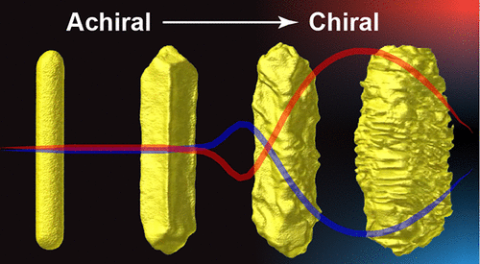Chiral plasmonics is a rapidly developing field where breakthroughs and unsolved problems coexist. We have recently reported binary surfactant-assisted seeded growth of chiral gold nanorods (Au NRs) with high chiroptical activity. Such a seeded-growth process involves the use of a chiral cosurfactant that induces micellar helicity, in turn driving the transition from achiral to chiral Au NRs, from both the morphological and the optical points of view. We report herein a detailed study on both transitions, which reveals intermediate states that were hidden so far. The correlation between structure and optical response is carefully analyzed, including the (linear and CD) spectral evolution over time, electron tomography, the impact of NR dimensions on their optical response, the variation of the absorption-to-scattering ratio during the evolution from achiral to chiral Au NRs, and the near-field enhancement related to chiral plasmon modes. Our findings provide further understanding of the growth process of chiral Au NRs and the associated optical changes, which will facilitate further study and applications of chiral nanomaterials.

